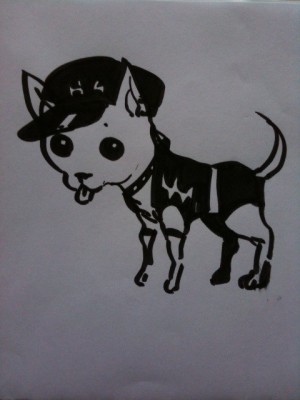It turns out structured procrastination is a beautiful thing. While trying not to practice for my upcoming German translation exam (500 words, 1.5 hours, 1 stressed Bonnie), I brainstormed, researched, and wrote this abstract about Disney pin collecting culture for the University of Southern California‘s upcoming grad conference on collection fads call “Kitsch, Curios, Camp.”
On a clearly unrelated note, the boys and I went to Disneyland a few weekends ago, where life is surprisingly fun and Michael Jackson continues, via the wonders of 3D, to force us all to experience his magic.
—
“Collecting the Mouse: Disney Pin Culture and the Consumption of Sentiment”
Pay attention in a crowd at Disneyland, Euro Disney, even a Disney cruise ship, and you’ll encounter a fellow visitor — there presumably, like you, to “experience the magic” — wearing a striking number of metal pins. Suddenly they’re everywhere, sporting hundreds of Disney-themed pins on lanyards, vests, hats: Minnie Mouse, cheerleading; Eeyore wrapped in an American flag. The most visible of these collectors, camped like buskers on the quaint sidewalks of Epcot and The Magic Kingdom, display their wares on velvet cloths. Their game: trading official Disney pins, of which there are thousands, in an attempt to find limited edition gems, long elusive favorites, or just like-minded enthusiasts. Introduced to the L.A. park in 1999 by the mouse himself, the pass time has since spread across the world, where collectors host conventions, follow a strict set of trade regulations, and have even been banned from Tokyo Disney for impeding the “magical” experience of others.
Reminiscent of the mid-1990’s Beanie Babies fanatics, “Disney Pin Collectors” — as they label themselves, on a vast array of websites and forums dedicated to the hobby, with proud capital letters — skew toward the middle-aged: adults filling their curio cabinets and closets alike with enamel Mickeys. Online, spouses lament the “addiction” that drives enthusiasts to spend $7 to $75 a piece for souvenirs each only two inches wide; particularly rare pins sell on eBay for up to $500. Meanwhile, collectors themselves echo Disney’s sentiment that each new pin helps “bring the magic to you,” solidifying the nostalgia of Sleeping Beauty or the ephemeral excitement of a day at Disneyland into an object: reassuring, portable, fungible.
From a cultural studies perspective, the pin-collecting phenomenon — which recently added a whole new audience to its ranks with its inclusion in the online game Virtual Magic Kingdom — brings into focus not only questions of kitsch, but also of collecting’s emotional value. Considering Marx’s “commodity fetishism,” as well as Freud’s notion of the fetish, Disney pins become more than hard-won curiosities. They also represent a uniquely fetishized sentamentality: the free-market item (bought, sold, traded, hoarded) whose true value is not monetary but emotional. More so than other consumerist fads, Disney pins come inherently wealthy with the associations of a collective cultural childhood. They serve, as the fetish, to remind collectors of that emotional tie at the same time they distract from it, tempting the consumer to fulfil the sentimental longing associated with the object itself — the image of a beloved character, of a happy memory — through endless act of consumption.









